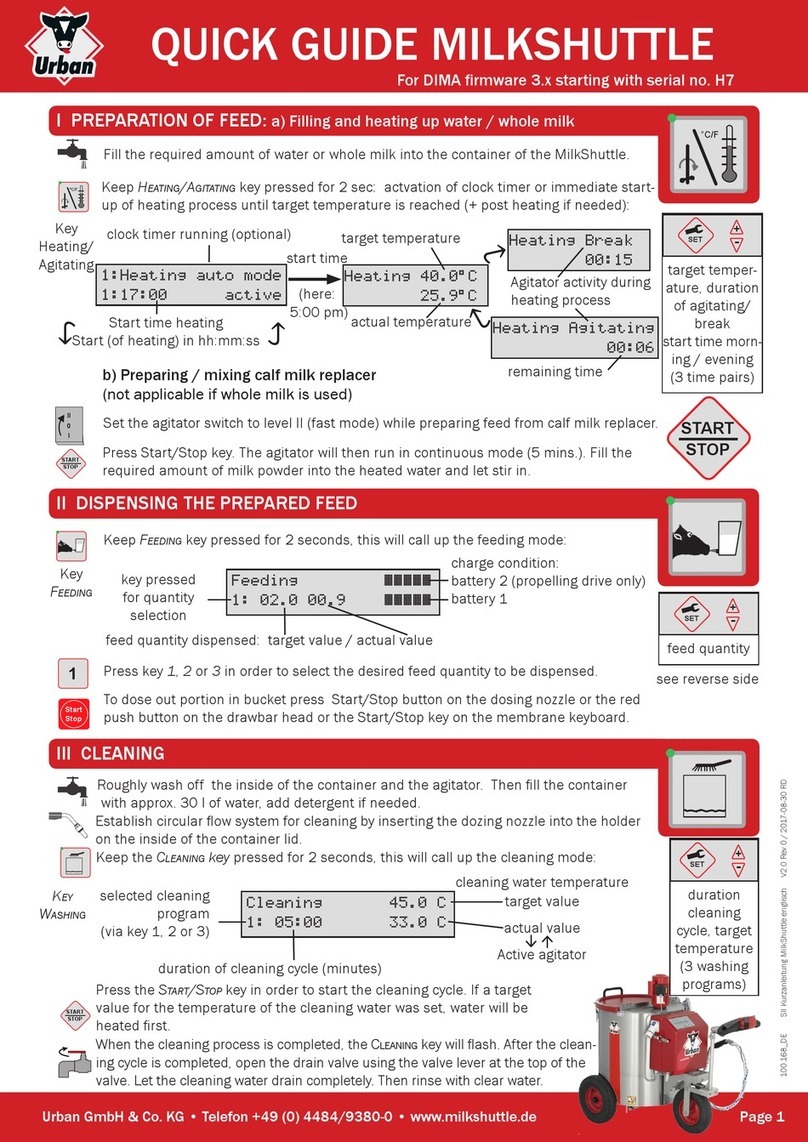
6.3.1 Removing/dosing feed ................................................................................................................................ 34
6.4 Cleaning........................................................................................................................ 37
6.4.1 Milk Shuttle without dosing pump ............................................................................................................... 37
6.4.2 Milk Shuttle with dosing pump (optional) .................................................................................................... 38
6.5 Moving the MilkShuttle.................................................................................................. 39
6.5.1 Moving on level ground ............................................................................................................................... 39
6.5.2 Moving the MilkShuttle on sloping terrain ................................................................................................... 40
7 Programming and calibrating.........................................................................43
7.1 General settings............................................................................................................ 43
7.1.1 Setting the time and date ............................................................................................................................ 43
7.1.2 Setting the user language ........................................................................................................................... 44
7.1.3 Changing the temperature unit (Celsius or Fahrenheit) .............................................................................. 44
7.1.4 Setting the warning levels for minimum and maximum temperature .......................................................... 45
7.1.5 Display Version and serial numbers ........................................................................................................... 45
7.2 Calibration..................................................................................................................... 46
7.2.1 Calibrate pump (time-controlled) ................................................................................................................ 46
7.2.2 Calibrate the pump with the flow rate controller (optional) .......................................................................... 47
7.2.3 Temperature calibration .............................................................................................................................. 48
7.3 Programming heating and agitating .............................................................................. 49
7.3.1 Overview ..................................................................................................................................................... 49
7.3.2 Operating values ......................................................................................................................................... 50
7.3.3 Programming the start times ....................................................................................................................... 51
7.3.4 Deleting the start times ............................................................................................................................... 52
7.4 Programming feeding.................................................................................................... 53
7.5 Programming the cleaning programs............................................................................ 54
8 What if...............................................................................................................57
8.1 General errors...............................................................................................................57
8.2 Display messages......................................................................................................... 58
8.3 Determining the operating code.................................................................................... 68
9 Maintenance/Repairs.......................................................................................69
9.1 Replace wearing part set .............................................................................................. 69
9.2 Replacing fuses ............................................................................................................ 72
9.3 Replace batteries .......................................................................................................... 73
9.3.1 Replace main batteries ............................................................................................................................... 73
9.3.2 Replace batteries for date/time ................................................................................................................... 74
9.4 Changing the wheels .................................................................................................... 76
9.4.1 Changing the front wheel ............................................................................................................................ 76
9.4.2 Changing the rear wheel ............................................................................................................................. 77
10 Spare parts.......................................................................................................79
11 Mixing tables....................................................................................................81
11.1 Variant I: water volume given in litres, CMR weight given in kilograms........................ 81
11.2 Variant II: water volume given in litres, CMR weight given in pounds .......................... 82
11.3 Variant III: water volume given in gallons, CMR weight given in pounds...................... 83
Index .................................................................................................................85




























